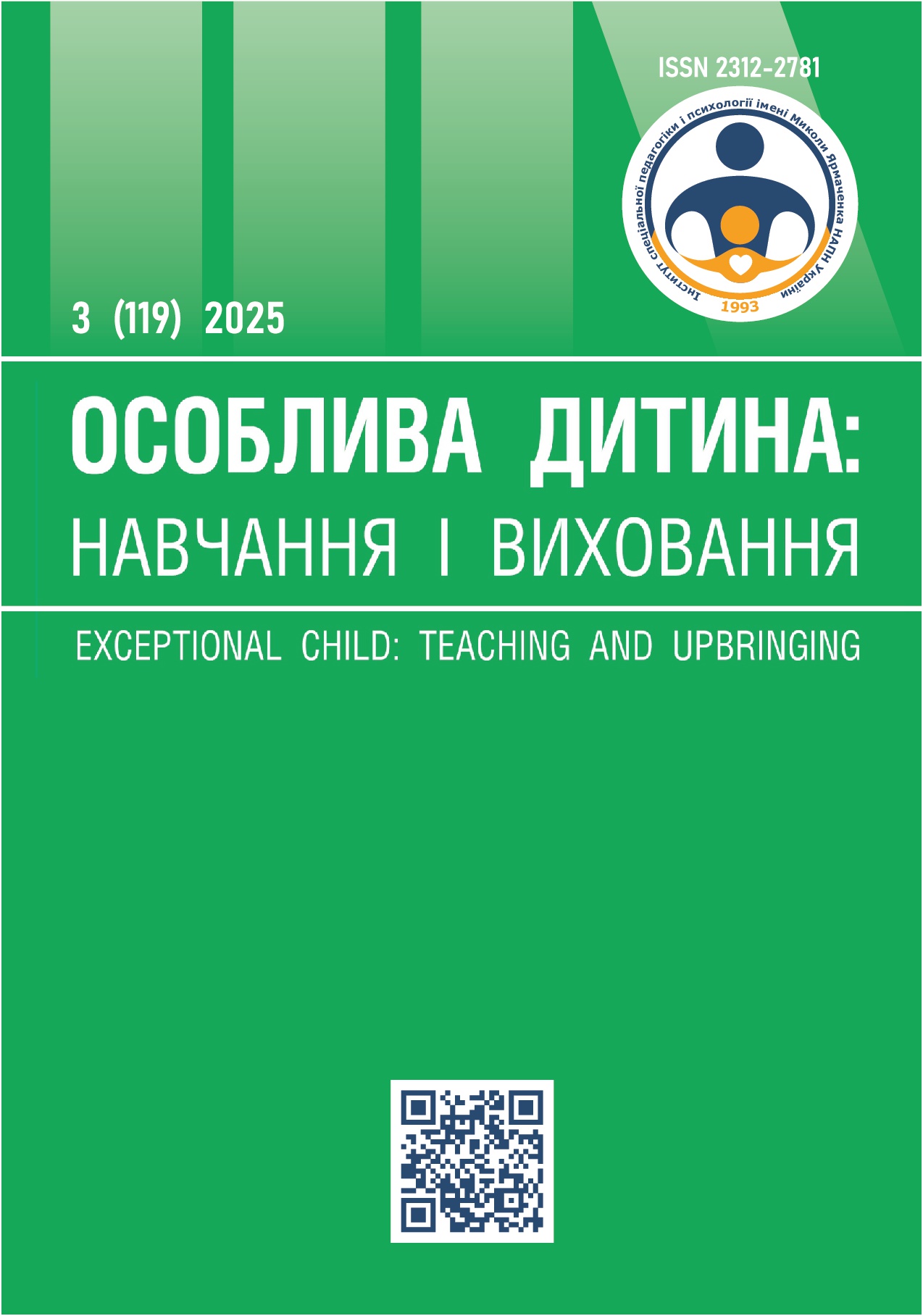STATE OF SPEECH FLUENCY IN CHILDREN OF OLDER PRESCHOOL AGE WITH STUTTERING
Abstract
The article examines the characteristics of speech development in older preschool children with stutterin тg under the conditions of the full-scale war in Ukraine. It analyzes the impact of psycho-emotional stress on respiratory regulation and articulation coordination, and their effects on the temporal-rhythmic organization of speech and its fluency. The study found that impairments in speech tempo, rhythm, intonation, pausing, and insufficient duration of controlled exhalation lead to irregularities in speech flow, frequent disfluencies, and muscular tension in children with stuttering. Based on recent studies, the key components of the temporal-rhythmic aspect of speech were identified, along with their normative characteristics for older preschool children.
The authors propose a methodology for assessing the development of speech fluency in preschool children with stuttering. Specifically, the study investigates: the ability to control breathing for speech and coordinate it with articulation; temporal and rhythmic parameters of speech and the quality of rhythmic pattern reproduction; accuracy and smoothness of speech production; and the physiological basis of speech.
The results revealed impairments in both physiological and speech breathing, leading to difficulties in regulating airflow, increased vocal apparatus tension, speech blocks, repetitions, and reduced intonational expressiveness. Insufficient development of respiratory function complicates the speech process, exacerbates secondary manifestations of stuttering, and negatively affects communicative activity. The study also demonstrates the presence of irregular speech tempo, various types of speech disfluencies, and disrupted coordination between breathing and articulation. These factors, combined with neuromuscular tension and unstable exhalation duration, reduce the fluency and expressiveness of utterances.
Based on the identified characteristics, the authors outline the main directions for speech therapy support: respiratory exercises incorporating phonatory load; interventions targeting muscular tension; development of the temporal-rhythmic component of speech; formation of self-monitoring and speech-planning skills; reduction of speech-related anxiety and fear of speaking; and systematic work with parents and families.
References
Особлива дитина: навчання і виховання. №3(119). 2025. с. 218-236


